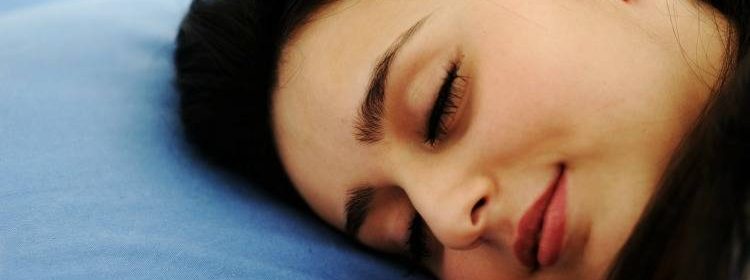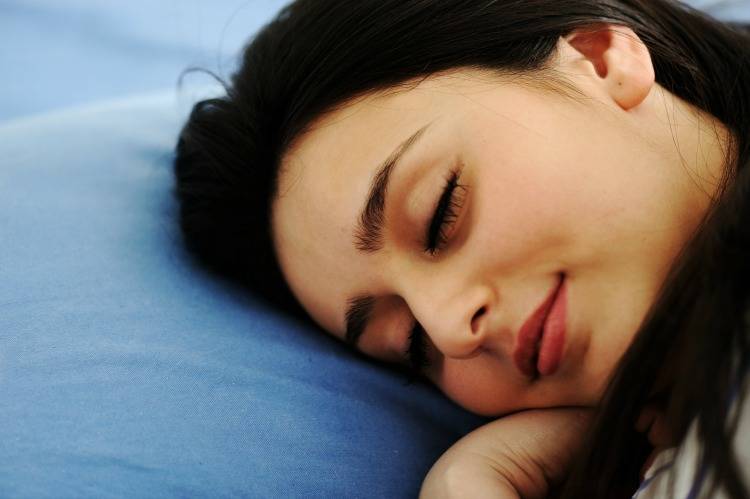
- clinic
- March 20, 2018
- 8267

By Dr. Amy Stenehjem
Your brain produces chemicals to help regulate your sleep-wake cycle (circadian rhythm). Certain brain chemicals can stimulate your brain by telling it to stay awake. These chemicals can be triggered by anxiety, stimulants, physical and emotional stress, and exposure to sunlight and artificial light. Artificial blue light emitted from laptops, tablets, and cell phones simulates sunlight and can confuse your brain into thinking nighttime is daytime.
Avoid a disruptive sleep environment
- Most people sleep best in a cool, dark, and quiet environment with temperatures set between 60 and 72 degrees Fahrenheit. (According to the National Sleep Foundation, the ideal bedroom temperature is around 65 degrees.) If your significant other prefers a warmer sleep environment, there are specialized pillow cases, bedding, and fans that can keep you cool while not disrupting his/her sleep.
- Some people experience extreme swings in body temperature at night and do best if they have multiple blankets nearby which can be easily added or removed throughout the night.
- If you experience night sweats, consider using bedding and clothing that wicks away moisture from your skin.
- It is best to sleep in a dark room. This is particularly important for those with chronic illness who require naps during the day. A dark room can be achieved with block-out shades and/or curtains. If these are not available, an eye mask can be helpful.
- It is important your sleep environment is free from disruptive sounds. A white noise sound machine or a fan can help reduce disruptive sounds. I use a Marpac Dohm DS Sound Machine which is the Official Sound Conditioner of the National Sleep Foundation. It is customizable and allows you to change the intensity and tone of the sound.
Create a relaxing bedtime ritual
- Read inspirational stories
- Listen to calming music
- Do breathing exercises
- Try this restorative body scan technique
- Use a diffuser with calming essential oils (e.g. lavender) 30-60 minutes before going to bed.
- Drink warm milk or herbal tea about an hour before going to bed
- Take a warm bath before going to bed
Retrain your sleep-wake cycle
- Use blue light reducing software on your electronics. Or better yet, turn off your electronics at least an hour before going to bed. (Install f.lux on computers and Window/Android devices. Use Night Shift on Apple devices.)
- Use low-watt light bulbs in your bedroom.
- Most of us with chronic illness get very little sunlight. Try to expose yourself to sunlight 15-20 minutes every day. This is most helpful if done in the morning because it tells your brain it is daytime and time to wake up.
- If you have difficulty waking up in the morning, consider trying a sunrise alarm clock.
Avoid foods, drinks, and chemicals that stimulate the brain
- Avoid caffeine, alcohol, nicotine, and other chemicals that interfere with sleep. Many people with chronic illness are ultrasensitive to caffeine and even drinking a small amount in the morning can affect sleep at night.
- Limit sugar intake, especially in the few hours before bedtime.
- Avoid eating large meals before going to bed.
Talk it out
- Chronic illness is stressful. If anxiety is causing poor sleep, consider working with a therapist.
Summary
Chronic illness and poor sleep go hand in hand. Many of us with chronic illness suffer from debilitating fatigue. To make matters worse, we often sleep poorly and do not get the restorative sleep our bodies require. Implementing these simple steps can help improve your sleep and your health.
Reference List:
- Chang A, Aeschbach D, Duffy J, et al. Evening use of light-emitting eReaders negatively affects sleep, circadian timing, and next-morning alertness. Proc Natl Acad Sci U S A. 2015 Jan 27;112(4):1232-7. doi: 10.1073/pnas.1418490112. Epub 2014 Dec 22.
- Stothard ER, McHill AW, Depner CM, et al. Circadian Entrainment to the Natural Light-Dark Cycle across Seasons and the Weekend. Curr Biol. 2017 Feb 20;27(4):508-513. doi: 10.1016/j.cub.2016.12.041. Epub 2017 Feb 2.
- Cho Y, Ryu SH, Lee BR, et al. Effects of artificial light at night on human health: A literature review of observational and experimental studies applied to exposure assessment. Chronobiol Int. 2015;32(9):1294-310. doi: 10.3109/07420528.2015.1073158. Epub 2015 Sep 16.
- Holzman D. What’s in a Color? The Unique Human Health Effects of Blue Light. Environ Health Perspect. 2010 Jan; 118(1): A22–A27. doi: 10.1289/ehp.118-a22.
- Diezemann A. Relaxation techniques for chronic pain. Schmerz. 2011 Aug;25(4):445-53. doi: 10.1007/s00482-011-1019-2.
- Lewith G, Godfrey A, Prescott P. A Single-Blinded, Randomized Pilot Study Evaluating the Aroma of Lavandula augustifolia as a Treatment for Mild Insomnia. The Journal of Alternative and Complementary Medicine. August 2005, 11(4): 631-637. doi:10.1089/acm.2005.11.631.
- Mi-Yeon Cho, Eun Sil Min, Myung-Haeng Hur, et al. Effects of Aromatherapy on the Anxiety, Vital Signs, and Sleep Quality of Percutaneous Coronary Intervention Patients in Intensive Care Units. Evid Based Complement Alternat Med. 2013; 2013: 381381. Published online 2013 Feb 17. doi: 10.1155/2013/381381
- Leproult R, Colecchia E, L’Hermite-Balériaux M, et al. Transition from Dim to Bright Light in the Morning Induces an Immediate Elevation of Cortisol Levels. 2001; 86 (1): 151-157. doi: 10.1210/jcem.86.1.7102.